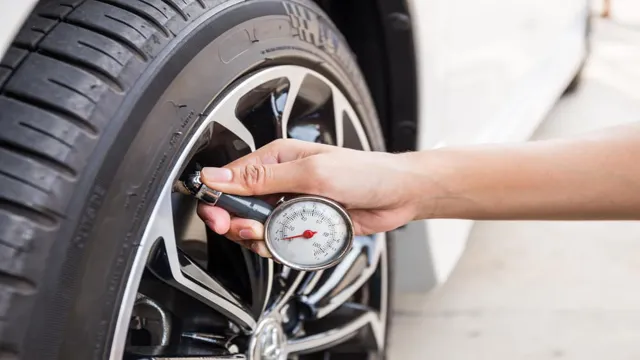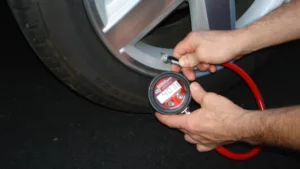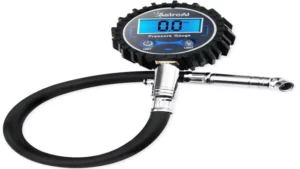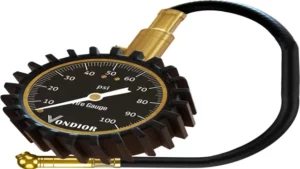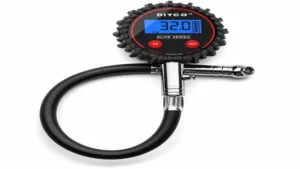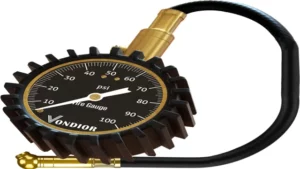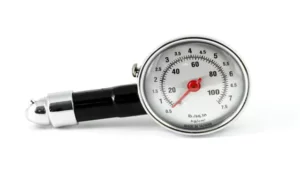If you’re like most drivers, you don’t give much thought to your tire pressure unless you notice a significant change in how your car handles. However, maintaining proper tire pressure is key to ensuring optimal performance, safety, and longevity of your tires. That’s why having a reliable tire pressure gauge is essential.
But with so many options on the market, how do you choose the best one for your needs? Fortunately, we’ve done the research for you and compiled a list of the best tire pressure gauges available. From digital to analog, to compact and easy-to-use, each of these models has its unique benefits. Whether you’re a car enthusiast or a casual driver, there’s a tire pressure gauge on our list that will help you keep your tires in top condition.
Read on to discover our top picks and find the perfect tire pressure gauge for you!
Why is it important to have the correct tire pressure?
When it comes to road safety, having the correct tire pressure is a crucial part of ensuring a smooth and safe ride. Tire pressure affects the handling of your vehicle, the wear and tear on your tires, and your vehicle’s fuel economy. Low tire pressure can cause your tires to wear out faster and increase the risk of a blowout, while high tire pressure can cause your tires to be less grippy and could cause handling issues.
That’s why it’s important to regularly check your tire pressure using the best tire pressure gauge you can find. When searching for a tire pressure gauge, look for one that is accurate and easy to use, like the Accutire MS-4021B. Checking your tire pressure once a month and adjusting it as needed can help keep you safe on the road while also saving you money on fuel costs and unexpected need for new tires.
Safety risks of improper tire pressure
Having the correct tire pressure is crucial for safe driving. When your tire pressure is too low or too high, it can lead to various safety risks. Low tire pressure causes your tires to wear out faster and generate more heat, which can lead to a tire blowout.
On the other hand, overinflated tires can cause your vehicle to handle poorly, decrease your ability to control your car, and potentially burst at any moment. These safety risks of improper tire pressure can lead to accidents that can result in severe injuries or even fatalities. That’s why it’s essential to check your tire pressure regularly and ensure that it meets the manufacturer’s specifications.
Scheduling routine maintenance for your vehicle will guarantee that your tires are at the correct pressure and reduce the chances of any accidents. Maintaining proper tire pressure is a simple yet essential task to ensure your safety while driving.
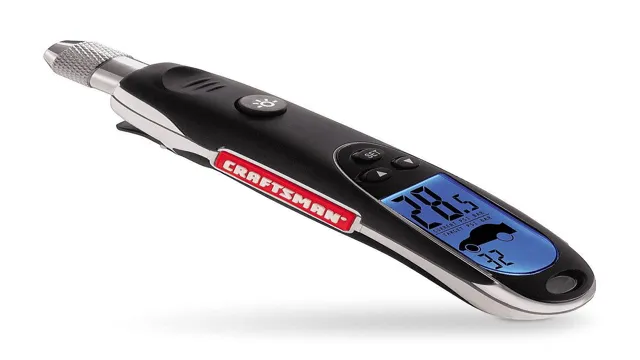
Fuel efficiency and tire pressure
Fuel efficiency and tire pressure are closely related topics that often go unnoticed by many car owners. Maintaining the correct tire pressure is crucial to ensure optimal fuel efficiency and safe driving. The appropriate tire pressure is usually indicated in the car owner’s manual or on the placard found on the driver’s side door jamb.
Maintaining the correct tire pressure is crucial for fuel economy as underinflated or overinflated tires can negatively impact fuel mileage. An underinflated tire increases rolling resistance, which means that the car must use more energy to keep moving. On the other hand, overinflated tires can reduce traction and increase the likelihood of a blowout.
Correcting tire pressure ensures better fuel economy and can add more miles per gallon, making it all that more important to check your tire pressure frequently!
Tire life and tire pressure
Having the correct tire pressure is essential for both your safety and the longevity of your tires. When a tire is underinflated, it generates more heat and causes the sidewalls to flex beyond their specified limits, leading to rapid tire wear and even tire blowouts. On the other hand, overinflated tires reduce the amount of contact between the tire and the road, resulting in less traction and a rougher ride.
Additionally, they are more susceptible to punctures and cuts when they’re overinflated. To ensure that you’re driving with the correct tire pressure, it’s necessary to check your tire pressure at least once a month and before long trips. You can find the recommended tire pressure for your vehicle in the owner’s manual or the sticker on the driver’s side doorjamb.
It’s important to note that the recommended tire pressure may vary depending on the tire size, load-carrying capacity, and other factors, so be sure to check the manufacturer’s specifications. Properly inflated tires can also help you save money on gas. According to the US Department of Energy, you can improve your gas mileage by up to
3% by keeping your tires inflated to the proper pressure. That’s over $100 a year in savings for the average driver! In conclusion, maintaining the recommended tire pressure is crucial for your safety, your tires’ longevity, and to maximize your fuel economy. Make sure to check your tire pressure regularly and keep your tires properly inflated to ensure a smooth and safe ride.
Types of Tire Pressure Gauges
When it comes to choosing the best tire pressure gauge, there are various types available in the market. Digital gauges are the most commonly used type as they provide instant and accurate readings. Analog gauges also work well, but they require a little more expertise to read.
There are also hybrid gauges that combine digital and analog systems for improved accuracy. Additionally, there are stick gauges, which are the most affordable but require a bit of practice to use correctly. Whichever type of tire pressure gauge you choose, remember that keeping your tires properly inflated is essential for the safety and longevity of your vehicle.
So make sure to invest in one that you feel comfortable using and is accurate and reliable.
Analog gauges
Tire Pressure Gauges When it comes to tire pressure gauges, there are several different types to choose from. Analog gauges, for example, are a popular choice and come in two varieties: stick-style and dial-style. Stick-style gauges look like a ballpoint pen and have a calibrated rod that pops out of the end when you press it onto the valve stem.
Dial-style gauges have a round face with a needle that moves to show the pressure. They’re a bit easier to read than stick-style gauges, but they can be bulkier. Another type of tire pressure gauge is the digital gauge, which displays the pressure on an LCD screen.
They’re usually the most accurate type of gauge and are easy to use, but they require batteries and can be more expensive than analog gauges. No matter which type you choose, it’s important to check your tire pressure regularly and keep your tires properly inflated for safety and to extend their lifespan.
Digital gauges
Digital gauges have become increasingly popular in recent years, thanks to their accuracy and ease of use. If you’re looking for a tire pressure gauge, there are a few types to choose from. One option is a digital gauge, which uses an electronic display to show the pressure reading.
This type of gauge is often more accurate than analog gauges, and it’s also easier to read. Digital gauges come in many different styles and sizes, some with backlit displays and other features. Some models even have built-in flashlights, making it easier to check your tire pressure in dimly lit conditions.
Using a digital gauge is simple, as you just need to turn it on, press it against the tire valve, and read the display. Overall, if you’re looking for a reliable and user-friendly tire pressure gauge, a digital gauge could be the way to go.
Pencil gauges
When it comes to checking your tire pressure, there are several types of tire pressure gauges to choose from. One commonly used option is the pencil gauge. As the name suggests, this gauge looks like a pencil and has a small measuring rod that pops out when the gauge is pressed onto the tire valve stem.
Pencil gauges are affordable and convenient to use, but they can be less accurate than other types of gauges and may require frequent calibration. Another popular option is a digital gauge, which uses an electronic sensor to measure tire pressure. Digital gauges are usually more accurate than pencil gauges and display readings clearly, but they are often more expensive.
Whatever type of gauge you choose, it’s important to check your tire pressure regularly to avoid uneven tire wear, poor handling, and decreased fuel efficiency.
Top 5 Tire Pressure Gauges to Choose From
Looking for the best tire pressure gauge to buy can be an overwhelming task. However, with a bit of research, you can narrow down your options to a top 5 list. The first on our list is the Accutire MS-4021B digital tire pressure gauge.
It is easy to use, accurate, and comes with a backlit display, making it easy to read even in low light conditions. The second on our list is the AstroAI digital tire pressure gauge, which offers precise readings and a durable construction. The third on our list is the TireTek Flexi-Pro tire pressure gauge, which also offers precision and has a flexible hose, making it easy to reach awkward valve positions.
The fourth on our list is the JACO ElitePro tire pressure gauge, which is made with high-quality materials and has a rugged design. And last but not least, the fifth on our list is the Oasser digital tire pressure gauge, which offers quick and precise readings and is compatible with a variety of valve stems. No matter which tire pressure gauge you choose from this list, you can be confident in its accuracy and reliability to keep your tires at the optimal pressure for a safe and smooth ride.
1. Accutire MS-4021B Digital Tire Pressure Gauge
If you’re looking for an accurate and reliable tire pressure gauge, the Accutire MS-4021B Digital Tire Pressure Gauge is a great option to consider. This gauge is designed to provide accurate readings quickly and easily, with a clear digital display and a user-friendly interface. One of the key benefits of this gauge is its ability to measure tire pressure with high precision, helping you to ensure that your tires are inflated to the correct level for optimal performance and safety.
Additionally, the Accutire MS-4021B is built to last, with a durable construction that can withstand heavy use and rough conditions. Overall, if you want a reliable and accurate tire pressure gauge that you can depend on, the Accutire MS-4021B is definitely worth considering.
2. JACO ElitePro Tire Pressure Gauge
The JACO ElitePro Tire Pressure Gauge is an excellent option for those who want accurate readings every time. It features a glow-in-the-dark dial, making it easy to read in low-light conditions. The gauge also has a large, 2-inch display that shows readings in both PSI and BAR.
This tool is designed for durability and long-lasting use, thanks to its rugged steel casing with brass components that are resistant to corrosion. Additionally, the gauge is equipped with a pressure release valve that helps you remove excess air from the tires. Overall, the JACO ElitePro is a highly reliable and user-friendly tire pressure gauge that can help you maintain the optimal tire pressure for your vehicle.
So, if you want accurate readings and a durable gauge that will last for years, the JACO ElitePro is an exceptional choice.
3. AstroAI Digital Tire Pressure Gauge
If you’re looking for a reliable tire pressure gauge, the AstroAI Digital Tire Pressure Gauge is a top contender. This gauge features an easy-to-read LCD backlight display and can accurately measure tire pressure up to 150 PSI. Its compact size makes it easy to store in your glove compartment or toolbox, and the ergonomic design ensures a comfortable grip.
Plus, this gauge has a built-in air bleeder valve to help you deflate tires if needed. Overall, the AstroAI Digital Tire Pressure Gauge is a great option for anyone looking for a durable and accurate tire pressure gauge that won’t break the bank. So, if you want to keep your tires in top condition and ensure the safety of your vehicle, be sure to give this gauge a try!
4. Vondior Tire Pressure Gauge
When it comes to keeping your car in great condition, monitoring your tire pressure is a crucial aspect. Not only does it improve your vehicle’s fuel efficiency, but it also enhances your safety on the road. That’s why having a reliable tire pressure gauge at hand is essential.
Vondior Tire Pressure Gauge is one of the top five gauges that you can choose from. It’s built with a sturdy steel casing and has a large 2-inch dial that is easy to read, even in low-light conditions. This gauge is also highly accurate, giving readings to within one PSI.
It’s easy to use, with a simple one-handed operation that allows you to adjust the pressure without needing any extra tools. Plus, it comes with a handy protective case that makes it easy to store and carry with you wherever you go. Whether you’re a professional mechanic or a car enthusiast, the Vondior Tire Pressure Gauge is an ideal tool for ensuring that your tires are in tip-top shape and ready for the road.
5. Rhino USA Heavy Duty Tire Pressure Gauge
When it comes to maintaining your car’s performance, tire pressure is a crucial factor. That’s why you need a reliable tire pressure gauge, and the Rhino USA Heavy Duty Tire Pressure Gauge is one of the best options on the market. This gauge features an extra-large, easy-to-read dial, making it simple to get an accurate tire pressure reading.
It also has a high-quality brass construction that ensures long-lasting durability. What sets Rhino USA apart from others is its robust build quality and accurate measurements. With a range of 0-75 PSI and a 360-degree swivel chuck, this gauge has everything you need to check your tire pressure with ease.
Plus, its compact and lightweight design makes it easy to store in your car’s glove compartment or trunk. So, if you’re looking for a reliable and precise tire pressure gauge, the Rhino USA Heavy Duty Tire Pressure Gauge is a top option to consider.
Conclusion
After careful research and consideration, we’ve discovered that the best tire pressure gauge to buy is actually…
the one you’ll use! Whether it’s a high-tech digital gauge or an old-fashioned pencil gauge, the key is to regularly check your tire pressure and keep it at the recommended level for optimal safety and performance. So, don’t sweat the small stuff – just find a gauge that’s convenient and intuitive for you, and keep your tires rolling smoothly down the road. Happy driving!”
FAQs
1. What are the different types of tire pressure gauges available in the market? A: The different types of tire pressure gauges available in the market are digital, dial, stick, and pencil. 2. How accurate are tire pressure gauges? A: Tire pressure gauges are accurate up to +/- 1 or 2 PSI (pounds per square inch) depending on their type and quality. 3. Can I use a tire pressure gauge to measure the pressure of all types of tires? A: No, you cannot use a tire pressure gauge to measure the pressure of all types of tires. Some gauges are suitable for only certain types of tires, such as car tires, bike tires, or heavy-duty tires. 4. What is the ideal tire pressure for my car? A: The ideal tire pressure for your car is usually mentioned in the owner’s manual or on the tire placard attached to the driver’s door jamb. It may also vary depending on the type and size of tires you use. 5. Can a tire pressure gauge be affected by the temperature? A: Yes, a tire pressure gauge can be affected by the temperature, especially if it is a stick or pencil type gauge. It is recommended to use a digital or dial gauge for accurate readings in extreme temperatures. 6. How often should I check my tire pressure? A: It is recommended to check your tire pressure once a month or before a long road trip. You should also check it whenever you notice any unusual wear or tear on your tires. 7. How do I use a tire pressure gauge? A: To use a tire pressure gauge, remove the valve cap from the tire, press the gauge onto the valve stem, and read the pressure on the gauge display. Make sure to keep the gauge perpendicular to the valve stem for accurate readings.
